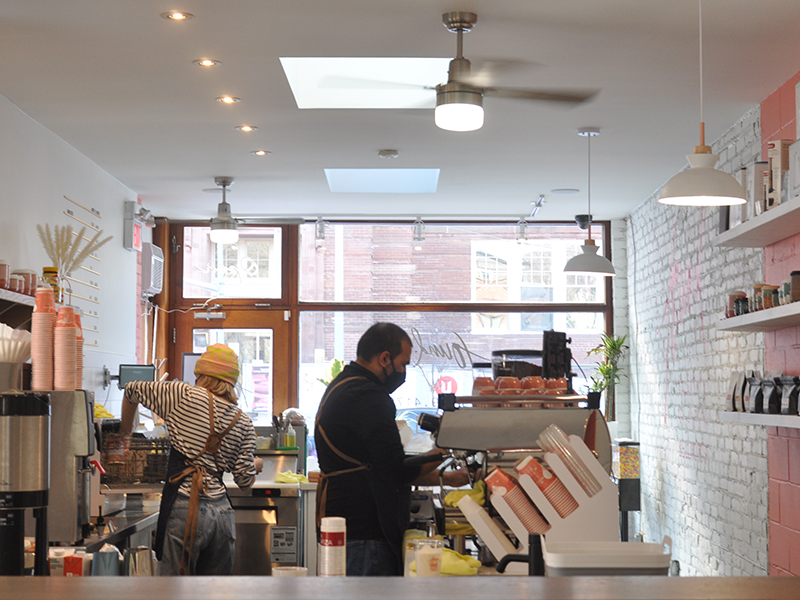Student stories uplift community voices

Second-year School of Journalism students wrapped up the year by publishing their feature stories on the school’s online publication T• (external link) .
The stories launched in April, but students worked on their pieces continuously throughout the winter semester in JRN 272: Feature Writing & Current Affairs and JRN 273: Boosting Media Techniques.
After reading the published stories, JRN 272 instructor H.G. Watson said they were all quite diverse and that she enjoyed reading and learning from the stories.
“I think it really speaks to, you know, you bring yourself to journalism school, and you bring your own identities and your own stories and your own community connections. We saw that just so well reflected across all of these stories.”
T• stories fall under certain categories including: food, services, pursuits, diversities, transformations, communities and COVID-19 spring.
After receiving the greenlight of approval from instructors, students upload their story to the backend of the site and are able to learn the behind-the-scenes of the journalism industry, including growing their knowledge of site tags, interactive sound elements, and image descriptions.
Mana Hosseini’s story under transformation, “It’s Not Easy to be a Middle Eastern Immigrant in Canada (external link) ,” visually and audibly showcases the experiences of Middle Eastern immigrants living in Canada.
Hosseini pitched her story to her instructor through a section-wide pitch session with other classmates. “The pitching process was perhaps like the hardest part of writing the feature. My instructor told me that you had to write something that you're passionate about, because we were going to work on it for like three months. And it was something that I should continuously care about.”
She was struggling with her identity as an immigrant, being Iranian and Persian and fitting in, and she knew others must have felt the same way. Hosseini felt it was something that she should write about. “It was really difficult because it was a personal struggle for me, and to kind of share it with the world was really weird.”

Found Coffee is in the Trinity Bellwoods neighbourhood in Toronto, Canada. (Sonia Tumkur/T•)
Finding your place in new communities was a common thread among T• stories, as seen also in Sonia Tumkur’s story, “This Coffee Shop Wants to Make You Feel at Home (external link) ,” spotlightingFound Coffee, founded in 2020 by Australia-born Leighton Walters.
“When the whole point of T• is really amplifying different communities within Toronto, and the GTA, and I kind of went back to who I was, and the areas and communities that I visited,” Tumkur says. “And one that came to mind right away was Found Coffee. It felt like a home away from home.”
For many of these up-and-coming journalists, T• is one of the first places they publish a piece online. Tumkur describes it as a safe space to make mistakes, but to also “know that these mistakes that I’m making are only going to make me stronger as I continue on in my career.”
Being part of the communities you write about can also make you realize how important it is to be authentic and open with your sources.
Hannah Mercanti’s piece “A Day at the Market (external link) ,” focused on marginalized groups in Toronto and how they feel in the thrifting and reselling scene.
“The biggest challenge I faced was trying to keep everyone safe and not really take advantage of anyone because a lot of these people have been taken advantage of in creative spaces and business spaces.”
Mercanti spent a lot of time with their sources before asking for an interview and built a relationship beforehand.
When asked to give advice to future students, Watson suggested reading features of different topics and styles before starting JRN 272.
Students have access to publications like the Toronto Star, The Walrus and New York Times through Toronto Metropolitan University’s library and Toronto Public Library sites. Watson also recommended researching features that were nominated and have won awards in the journalism industry.
“Just keep in mind that it's a journey and one class doesn't make or break who you're going to be as, as a writer or a journalist or as a person.”